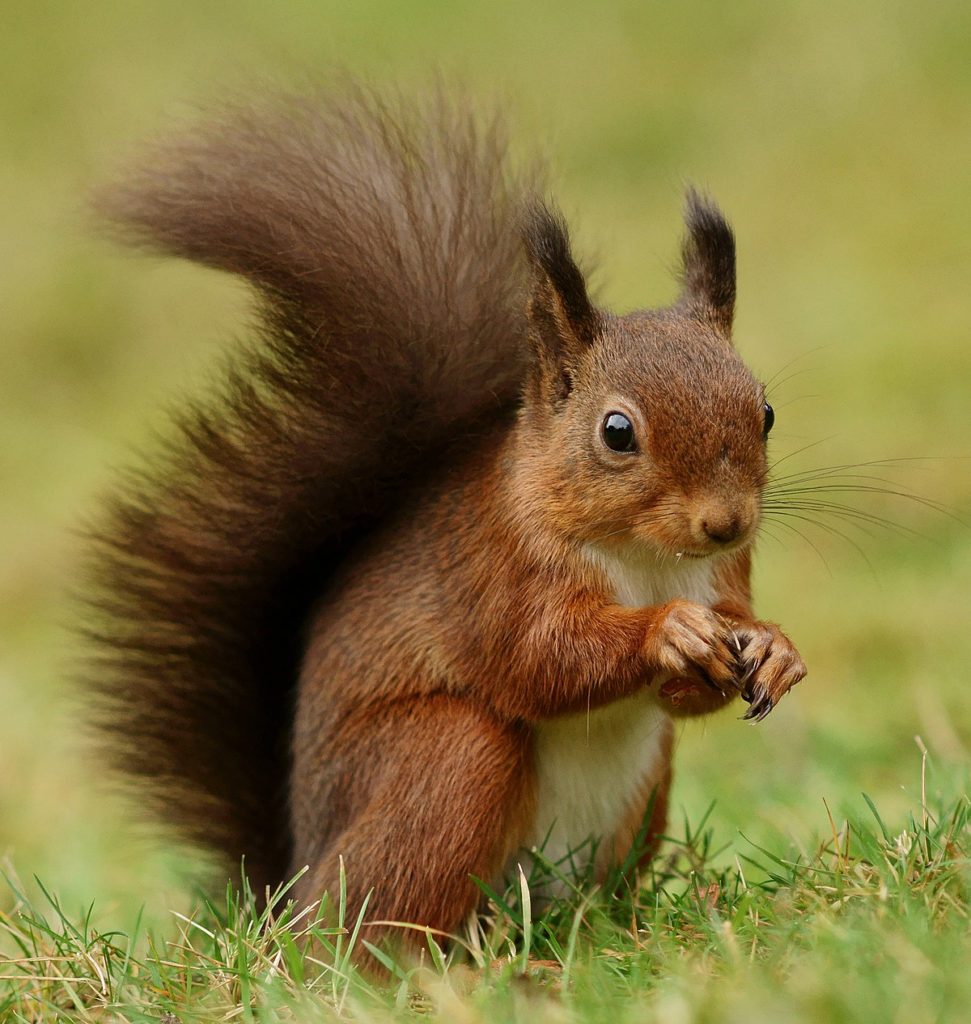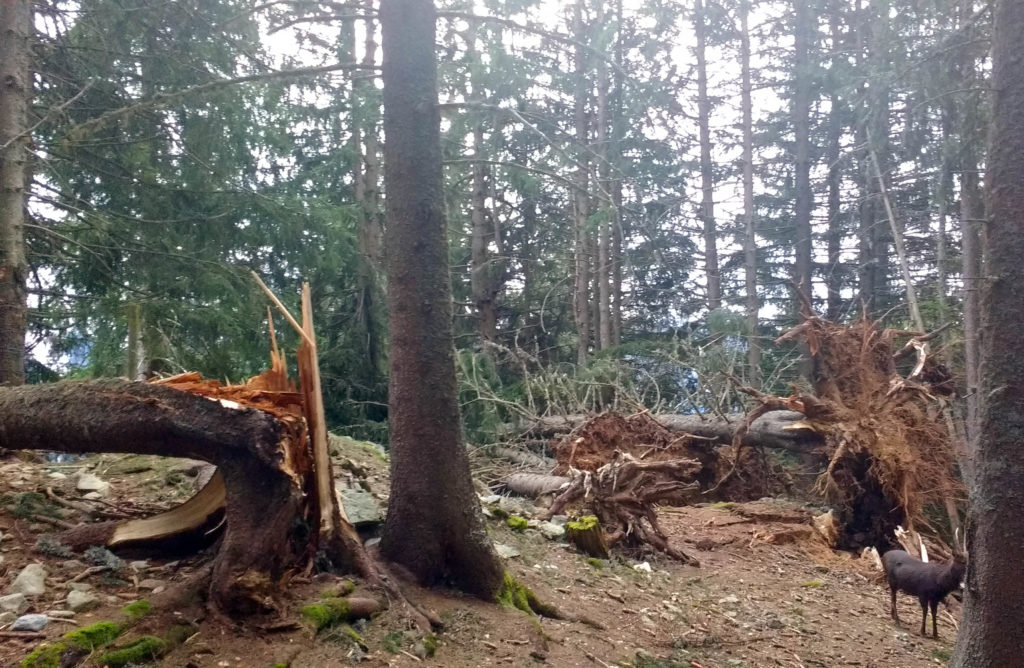
natural heritage
of Exception
The Balcon de Merlet is one of the best viewpoints for the observation of the Taconnaz glacier, the Bossons glacier but also the immense paravalanches built at the bottom of the valley, or to follow the ascent of mountaineers at Mont Blanc.
Merlet is also a showcase of protected natural areas where you can discover exceptional biodiversity.
A breathtaking panorama … It’s not for nothing that the site is called the Balcon de Merlet!


Glacier observation point
The incessant retreat of glaciers makes us aware “live” of global warming.
The Bossons Glacier (the largest) and the Taconnaz Glacier (facing Merlet) are both cascading glaciers: their descent is faster: more than 100m / year (the Dôme du Goûter is a glacier in a cap, the Sea of Ice is a valley bottom glacier).
View of the Taconnaz glacier from the balcony of Merlet.
The Bourgeat Glacier, suspended from the Needle of the Goûter is existing.
In 1930 approximately.
View of the Taconnaz glacier from the Balcon de Merlet
Today
Indeed, the glaciers advance! How it works ?
The ice forms above 3000 m altitude, by the accumulation of snow. The weight of the ice makes it descend naturally to the valley. On her way, she takes pebbles, sometimes big rocks, which use the rock: one can thus observe the tracks left by the old glaciers (moraines, polished rocks, erratic blocks)
Thus, the ice formed at Mont-Blanc directly feeds the Glacier des Bossons, and takes 50 years to end up down!
However, the heat melts the ice! Thus, melting takes over the flow of the glacier: it is then seen “back”.
The hot summers over the last 20 years are causing rapid and significant shortening of all alpine glaciers.
Precipitation plays a key role in the formation of glaciers: a drop in precipitation accentuates the phenomenon of glacial retreat.

The Carlaveyron Nature Reserve
Dominant Merlet, bounded by the aiguillette des Houches, the aiguillette Brévent and the torrent of Diosaz, this small nature reserve is akin to a water garden, with its multitude of streams, lakes, marshes, peat bogs and “dwarf” (local name designating small bodies of water). The passage of the glaciers dug a set of depressions on this plateau.
Humidity and altitude determine the establishment of a rare specific flora. Peat bogs and bas-marshes welcome the larvae of the Cordulie des Alpes, a dragonfly that is fond of the high-altitude peatlands where the sundew, the narrow-leaved ribbon or the Magellan sedge grow, a rare plant found in France only in Savoie and Haute-Savoie. It is also the territory of the red frog and the alpine newt.
The area of the Vogealle, mosaic of lawns and blueberry and rhododendron is frequented by the black grouse.
In the extension of the Aiguilles Rouges Nature Reserve, the wild beech fir forest area overlooking the Diosaz gorges is home to rare and endangered species such as the European lynx, the hazel grouse and the golden eagle. the tridactyl peak.

Natura 2000 Area
The plateau of Carlaveyron and the Coupeau and Merlet slopes are included in a protection zone of community interest of about 21000ha, spread over 6 communes. We keep in Les Houches:
Animal species :
– Wintering area for chamois and ibex. Presence of many large mammals: deer, wild boars, deer in the spruce forest.
– Presence of mountain hare and lynx.
– Nesting of golden eagles, hazel grouse, ptarmigan and black grouse. Presence of Peregrine Falcon, Golden Eagle and Bearded Vulture. In addition, several species of community interest are present and nest in the forest, including the Eurasian Owl, Tengmalm’s Owl, Three-toed Woodpecker, Woodcock.
Plant species:
Of the 441 species listed, 20 are rare and / or protected, including the Alpine Lycopodium, the Magellanic Lick, the Leafless Epipogon, the Round-leaved Rossoli and the Swiss Willow which are protected at the national level.
The objective of the ranking is to protect the habitats. This involves monitoring current human activities (pastoralism, hunting and tourism) as well as limiting the impact of new activities: coherent development of tourist actions and not favoring the (unlikely) resettlement of pastoral exploitation.
Actions will necessarily be put in place to maintain these habitats of priority interest in order to:
– first restore the environments and their characteristics (especially water),
– promote the maintenance of these environments in the face of a natural evolution of competing forest environments

Altitude effects
The higher you get, the more difficult the living conditions become, and even beyond 3000m practically impossible:
• drop in temperature: when you go up 100m, the temperature drops by about 1 ° C. So when it’s 20 ° C in Chamonix, it’s 15 ° in Merlet, 2 ° in the Aiguille du Midi and … 12 ° in Mont Blanc!
• increased solar radiation and wind, which promotes dehydration
• increase in quantity and duration of snow, which shortens the vegetative period in plants or the rearing period of young animals
• decrease in soil thickness and humus
Animals and plants have had to adapt to these rigorous conditions … thanks to their different coats, to a behavior “with the saving of energy”, to the hibernation for some.
The plants have found the solution: it is dwarfism. The higher you climb, the smaller they are, the more colorful and the stronger. And yes, because we must hurry to grow, bloom, attract insects to pollinate … Indeed, at 2000m, they have only 5 months to settle all that!

Predators
The animals of Merlet are not safe from predators! Indeed most of them manage to climb over the fence or simply by the airs like birds of prey!
The biggest predator is the lynx, a big, very discreet cat, able to tackle prey much bigger than him. Several lynxes live in the Diosaz valley (only a few kilometers from Merlet)
The fox can tackle young fawns or marmots, but he has a very important role as a scavenger and a big consumer of small rodents in Merlet …
The golden eagle is present in the valley of Chamonix but so shy that you, visitors of the park, move away without your knowledge! He has already attacked fawns and marmots. In the same register we find the kite, the buzzards, and even the big crows …
The bearded vulture, introduced into the region is not a predator it comes on occasion, on old carcasses …
Finally, the wolf, passing by, has never been able to enter the park.

Unexpected encounters
The spruce forest is home to very specific bird species such as the black woodpecker, the spotted woodpecker, the green woodpecker, the speckled nutcracker, the crossbill of the fir… In piles of woods or slopes, it is not uncommon to meet the cute troglodyte or the furtive ermine!
Small rodents will also delight you: those who fly from branch to branch: squirrels of course! At home they are very dark, almost black, they are called charcoal squirrels.
Less pleasant encounter, vipers live in the pierriers. Very fearful, they hide at the slightest disturbance.
Very high in the sky, vultures and bearded vultures can watch you, they nest in the cliffs of the Fiz above Passy.
And there, at your feet, a whole fauna of insects including the famous crickets that sing in full heat.


The forest
The forest of Merlet, as in the whole valley of Chamonix, consists mainly of spruces. Spruces suffer a lot from drought in the summer, because of their roots on the surface. They are therefore easy prey for bark beetles, insect pests that dig pretty galleries between the bark and wood, resulting in the death of softwood.
Moreover, the spruce stand is quite old (more than 70 years old), and therefore pays a heavy tribe with stormy winds.
Thus, on Merlet, we regularly cut spruce, to cut them into boards or firewood, then we replant species better adapted to the new climatic conditions: larches, beech, mountain ash, chestnut, birch, cherry, fruit and fruit trees.
So that the animals cannot eat them, we must protect them with a wire mesh, which will be removed when the tree will be large enough.

